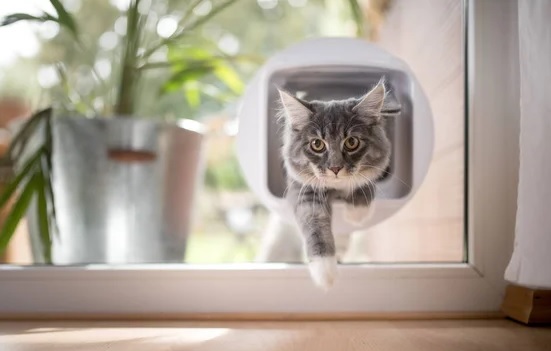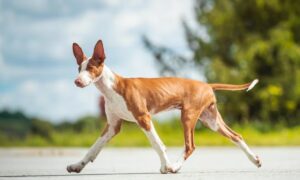What is Cat Flaps ? 5 Things To Know About The Cat Flap

A cat flap, also known as a cat door or pet door, is a small opening in a door or wall that allows cats (and sometimes other small animals) to move in and out of a house or specific areas freely. It provides cats with the independence to enter or exit a space without requiring human assistance. Cat flaps are designed to accommodate the natural behavior of cats, allowing them to explore the outdoors, access litter boxes, or move between rooms at their own convenience.
Cat flaps come in various sizes and designs to suit different cat breeds and installation requirements. They can be installed in exterior doors, interior doors, or even walls, depending on the homeowner’s preference and the layout of the house. The primary purpose of a cat flap is to enable cats to come and go as they please, reducing the need for constant door opening and closing.
In addition to manual cat flaps that require cats to physically push the door open, there are also automatic cat flaps available. These utilize sensors or microchips to detect the cat’s presence and unlock the door automatically, granting the cat access without any physical effort.
Cat flaps offer several benefits to both cats and their owners. They provide cats with the opportunity to engage in natural behaviors, such as exploring, hunting, or sunbathing outside. This can contribute to their physical and mental well-being. For owners, cat flaps alleviate the need to monitor or assist cats in entering or exiting the house, especially when they are not available or during nighttime hours.
Modern cat flaps often incorporate energy-efficient features to minimize heat loss or gain, ensuring that the home remains insulated. Some cat flaps also offer additional safety and security measures, such as locking mechanisms to control access or microchip recognition systems to allow only authorized cats to use the door.
When considering a cat flap, it is essential to select an appropriate size, consider the installation location, and take into account the specific needs of the cat and the household. Safety and security should always be prioritized to protect the cat and maintain the integrity of the home.
A cat flap, also known as a cat door or pet door, is a small opening in a door or wall that allows cats (and sometimes other small animals) to come and go freely without human assistance. Here are five things to know about cat flaps:
- Function: A cat flap provides a convenient solution for cat owners who want to give their feline companions the freedom to access the outdoors or move between rooms without constantly opening and closing doors. It allows cats to enter or exit the house at their own leisure.
- Design and Installation: Cat flaps typically consist of a small door with a hinged or sliding mechanism that can be installed in an existing door or wall. They come in various sizes to accommodate different cat breeds. Installation usually involves cutting a hole in the desired location and securing the cat flap in place.
- Manual or Automatic: Cat flaps can be either manual or automatic. Manual cat flaps require the cat to physically push the door open to pass through. Automatic cat flaps, on the other hand, use sensors or microchips to detect the cat’s presence and unlock the door, allowing the cat to pass through without any physical effort.
- Energy Efficiency: Many modern cat flaps are designed to be energy-efficient, minimizing heat loss or gain. They may feature insulation materials or magnetic seals around the door to prevent drafts. Some cat flaps even have dual-flap systems for enhanced insulation.
- Safety and Security: Cat flaps can be equipped with additional safety and security features. For instance, some cat flaps have locking mechanisms to restrict access at certain times or to prevent unwanted animals from entering the house. Microchip-activated cat flaps ensure that only authorized cats with a matching microchip can enter or exit.
Remember to consider your cat’s safety and the specific needs of your home when choosing and installing a cat flap.








